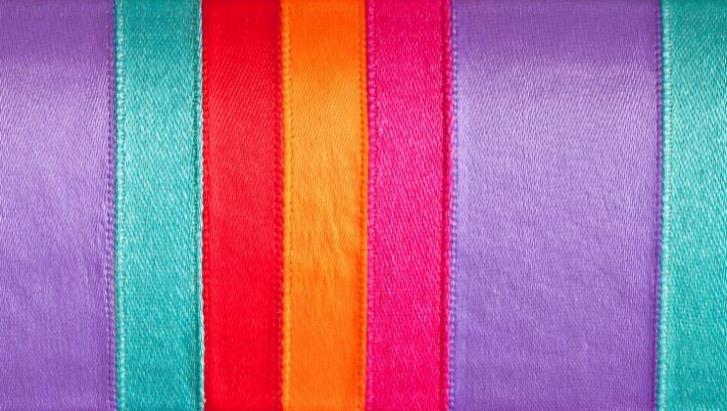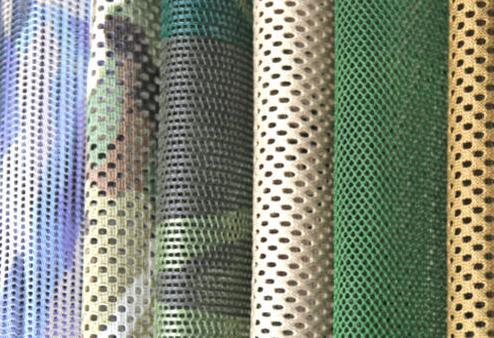The development of nylon fiber has impacted the world because of its numerous benefits in the creation of various products for food packaging, car parts, kitchenware, fishing equipment, and clothing material. It is one of the most useful synthetic materials that you cannot live without. Although the production of nylon entails thousands of dollars, it is still considered an affordable option because of the availability of its material for manufacturing all types of garments.
What is Nylon Fabric?
Nylon Fiber is synthetically made fiber created for the fashion industry and clothing manufacturing. It looks similar to silk, but it differs in how it is created. The term nylon refers to the generic name of synthetic polymers consisting of polyamides. It is processed to form into films, shapes, and fibers.

Nylon plays a major role in the manufacturing of apparel, clothing, car parts, rubber reinforcement, food packaging, ropes, and electrical equipment. The first-ever nylon was developed by a research team in the 1930s led by Wallace H. Carothers, an American chemist.
Carothers worked for E.I du Pont de Nemours & Company. It was the first of its kind to produce the fiber made by chemical synthesis produced from compounds from coal, water, air, petroleum, and coal. The discovery of the use of compounds led researchers to expand their research on polymers that paved the way for the development of nylon fibers.
Where does Nylon come from?
The beginning of nylon production started with a research project initiated by DuPont under the helm of Carothers in 1927. Nylon 66, the forerunner of nylon today was created in 1935 at the DuPont Experimental Station with the Wallace team. Its first commercial use was recorded in 1938 when it was used for making a toothbrush with nylon bristles.
In 1939, the first nylon stocking was created and was displayed during the New York World’s Fair in 1939. The stockings were commercially sold in 1940. About 64 million pairs of nylon stockings were made and sold out during this year.
When World War II erupted, nylon production was shifted to making parachute cords and parachutes. The demand for nylon keeps increasing during wartime for making products used for battle. The discovery of nylon has changed the lifestyle of people around the world as its uses are not limited to clothing manufacturing.
What is Nylon fabric good for?
Although the production of nylon is a bit expensive, it is still the best fabric if you are engaged in clothing manufacturing and fashion merchandising. Manufacturers consider nylon as an alternative material in garments and apparel because the ingredients are readily available.
There are numerous fabrics made of nylon that they can source locally. These nylon fibers are made of various stretches that are excellent materials for swimsuits, underwear, jerseys, leotards, cycling shorts, and lingerie. The stretch makes the wearer feel comfortable when swimming, running, hiking, or cycling.
As a versatile material, nylon’s flexibility can be converted into fibers or molded to form into different things that you can use for your home, office, or car. Carpets, bowls, toothbrushes, ropes, and umbrellas overhead are made of nylon.
Nylon fiber is a low-maintenance alternative in the textile manufacturing sector as they are fresh, light, comfortable, durable, and easy to clean.
What is Nylon fiber made of?
Nylon is composed of condensation copolymers or polymers. The reaction of difunctional monomers that contain equal amounts of carboxylic acid and amine resulted in the formation of nylon. Through this process, both ends of the monomers are formed similar to the process of polypeptide biopolymers. Nylon fiber is the result of the chemical reaction of both diamine and dicarboxylic acid.
There are two methods for the production of nylon fiber. The first method involves molecules that are composed of COOH. Both ends of this acidic group react with the molecules containing amino NH2 groups at both ends.
The type of nylon produced is named after the number of carbon atoms that are responsible for separating the two amines and two acidic groups. Most nylon fibers are in the form of nylon 66, which is the result of the reaction of the hexamethylenediamine and the adipic acid. The molecules of nylon are flexible with some weak forces.
Nylon Fabric Characteristics

Nylon like other fabrics has its own unique characteristics that are not found in other raw materials in clothing and industrial manufacturing. This fiber is sturdy, but could not withstand when exposed to some types of chemicals, heat, and UV light. It easily melts when exposed to heat as they are fire-resistant.
The fiber in your garment deteriorates rapidly when exposed to phenols, iodine, alkali, water, and oils. Their lustrous and smooth texture could be ruined as they are hygroscopic, which means they absorb water even if it comes from the air.
Although they dry quickly, the exposure can be damaging to their texture, which can also affect their lustrous appeal, elasticity, and resilience to external factors. Nylons are not ideal in making products and machinery that heat up while in use as they cannot last long.
Nylon is compatible with cotton and spandex when mixed together in producing garments and textiles.
How does Nylon fabric impact the environment?
Manufacturing products made of nylon leave a gas footprint similar to that of wool. According to a report by English researcher Berners-Lee that in nylon carpet manufacturing, the greenhouse gas footprint averages at 5.43 kilograms carbon dioxide equivalent per kilogram in Europe.
PlasticsEurope issued separate data stating that the production of nylon 66 left a greenhouse gas footprint of 6.4 kilograms of carbon dioxide per kilogram. The breaking down of nylons in fire creates deadly smoke, ashes, and fumes that contain hydrogen cyanide.
The downside of nylons is they are expensive to produce. Manufacturers dump discarded nylons in dumpsites that hardly decompose. According to studies, nylon fabrics could take up to thirty to forty years to decompose. Things made of nylon fiber thrown in dumpsites end up piling up for several decades.
Since the recycling process of nylon is costly and tedious, only a few manufacturers use it in their manufacturing of various products.
Nylon vs. Polyester
When asked the difference between nylon and polyester, they both possessed different characteristics and similarities. Both are synthetic fabrics and flame retardants. The chemical name of nylon is Polyamide and polyester is Polyethylene Naphthalate.
The production of nylon is costly, which makes clothing made of this material a bit pricey compared to polyester. When it comes to resilience, nylon is resistant to extreme weather condition and they are more durable than polyester. That is why nylon is used in making swimwear, outdoor apparel, and outwear.
Polyester is resistant to heat while nylon is oil resistant. Both fabrics are chemical and abrasion resistant, but this does not mean they are exempted from chemical exposure. Nylon has a lower moisture absorbency than polyester.
Both are resistant to wrinkles and shrinkage, but still, you have to be cautious when handling them during washing and drying. Polyester is used in almost all types of garments like shirts, dresses, skirts, and polos.
Disadvantages of Nylon Fabric
Nylon-made products have enduring quality and they can weather wear and tear. However, due to its chemical composition, it has also some disadvantages that you must be aware of. Exposure to alkalis, phenols, iodine, and heat could end the life of your things that are made from nylon fabric.
The chemicals present in your clothes will melt the fiber that loses its strength if they are directly in contact over time. Other chemicals, alcohol, solvents, and some forms of oils do not impact your things made from nylon.
Nylon reacts to heat even if it is non-flammable. It has the tendency to react with shrinkage and moisture that leading to stretching the fabric in the long run. When the nylon is exposed to water and air, it diminishes its texture, and eventually loses its resilience. Since it is not resistant to sunlight, nylon fades its color that leads to yellowing and deterioration.
What is Nylon fabric used for?

Nylon is a versatile fabric that is used for different purposes. This fabric is usually attached to clothing manufacturing. It is one of the most popular types of fabric in producing garments, shirts, raincoats, stockings, underwear, raincoats, lingerie, cyclewear, and swimwear.
For industrial purposes, nylon is used in the manufacturing of seat belts, conveyers, airbags, parachutes, ropes, nets, tents, thread, tarpaulins, and fishnets. Nylon is also used as an added ingredient in the manufacturing of machine parts and car parts.
Since nylon can be both tough and soft in texture due to its thermoformable characteristic, they are ideal in packing processed food.
Nylon Fabric Price
The price of nylon fabric keeps changing in China. On May 28, 2021, the market for nylon 6 was impacted by the negative outlook over the demand level in the succeeding months to come. The price report covers nylon 6 or polyamide 6 as they are impacted by the chain prices of raw materials, such as filament yarns, staple fibers, caprolactam, and benzene.
The nylon price on Alibaba per 1 kilogram is between 1 USD to 4 USD. Some sellers sell at 2.40 to 2.80 USD per kilogram. You can save extra dollars if you buy the nylon fiber in bulk.
Conclusion
This article teaches you about the science behind nylon fabric, where it came from, how it was made, its usefulness, and its characteristics. The production of nylon has impacted the environment, but some manufacturers are recycling to save Mother Earth. Nylon has its advantages and disadvantage and how it is compared with polyester. Nylon is sold at low prices if you buy it from a wholesaler like Alibaba.
